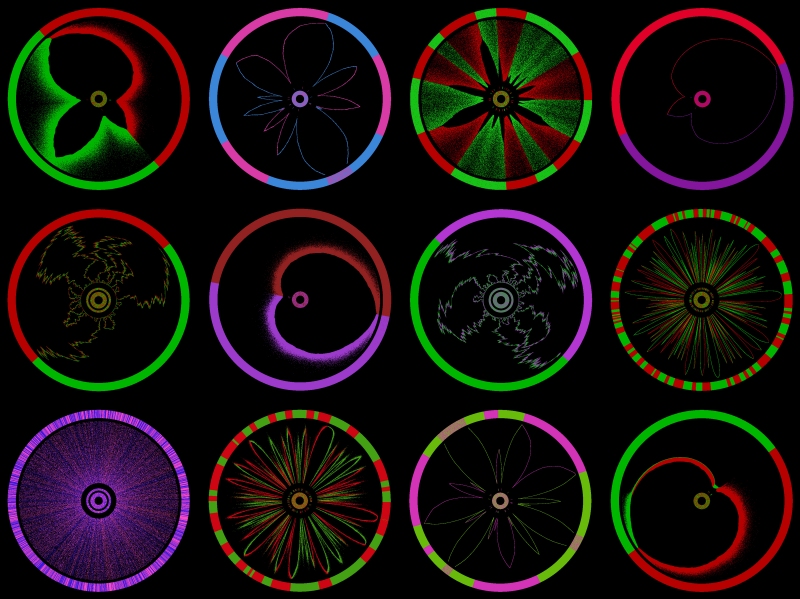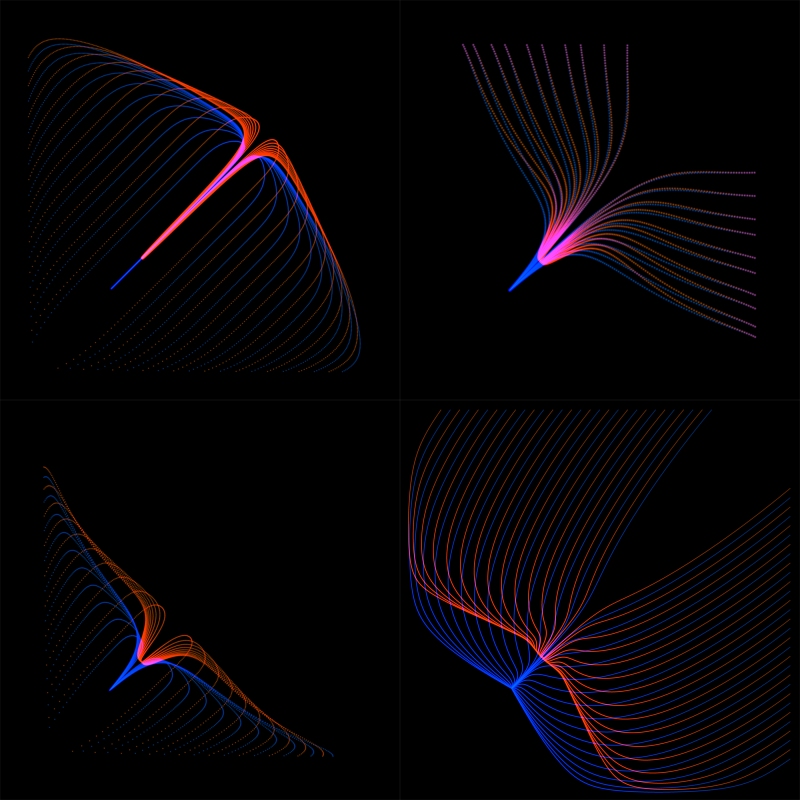We have art in the Department! Alongside displays relating to our History of Mathematics course, we display images generated by academic research.
Flowers of Segregation

The display of Andrew Lewis-Pye’s Royal Society 'Flowers of Segregation' model is on the 3rd floor corridor of Columbia House. Produced alongide George Barmpalias, and Richard Elwes, it was a winner in the Royal Society's Picturing Science competition, in the Infographics category.
More information on this work is on Richard Elwes' site.
The Jellyfish

These figures are taken from A mathematical analysis of the evolutionary benefits of sexual reproduction, by Andrew Lewis-Pye (LSE Mathematics) and Antonio Montalban (Berkeley)
These images relate to a project concerned with rigorously establishing the benefits of sexual over asexual reproduction in optimising the mean fitness of populations. Each of the four plots shows the trajectory of the centre of mass for various sexual (red) and asexual (blue) 2-locus populations, evolving over multiple generations, and beginning from a number of different `fitness distributions’. The context modelled here is one in which there is a fixed upper bound on the fitness attainable by any given gene. The fitness of the first gene corresponds to the x-axis while the fitness of the second corresponds to the y-axis, meaning that overall fitness increases along the line x=y. Each point represents the centre of mass of a population at a single generation, and the populations were then allowed to evolve for a sufficient number of generations that an equilibrium point was reached. In each case, one can see that the globally-attracting fixed point constitutes a greater mean fitness for the sexual population. The different patterns in each of the four plots result from changing the probability of mutation when genes are copied.
Photography
Alongside School photographs in use on our site, we credit many of the photographs of our staff and students to Carl Goodwin.